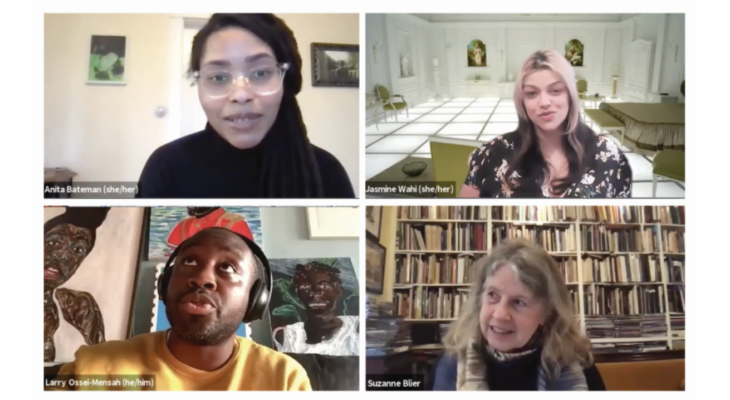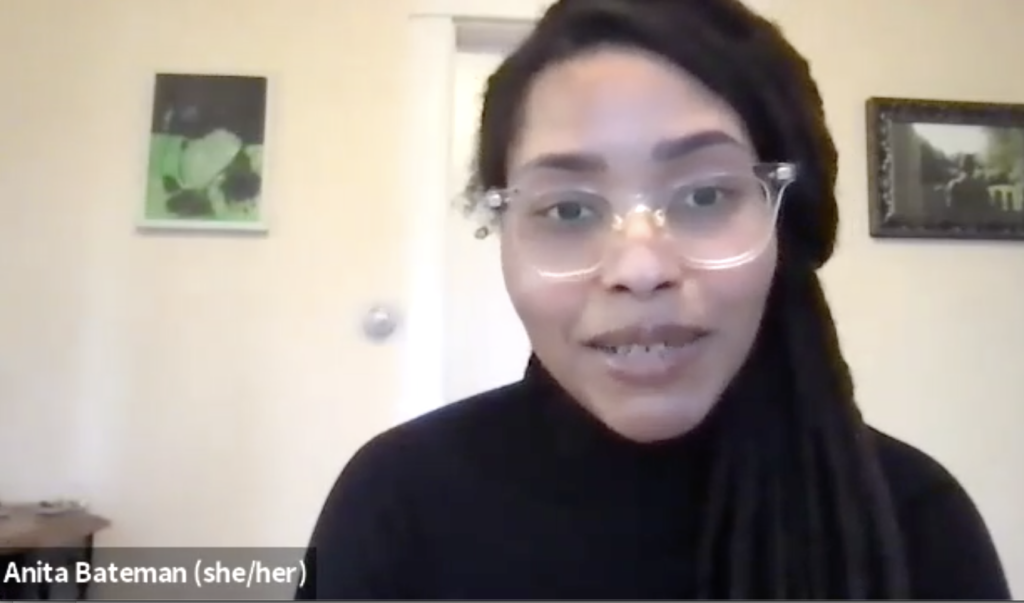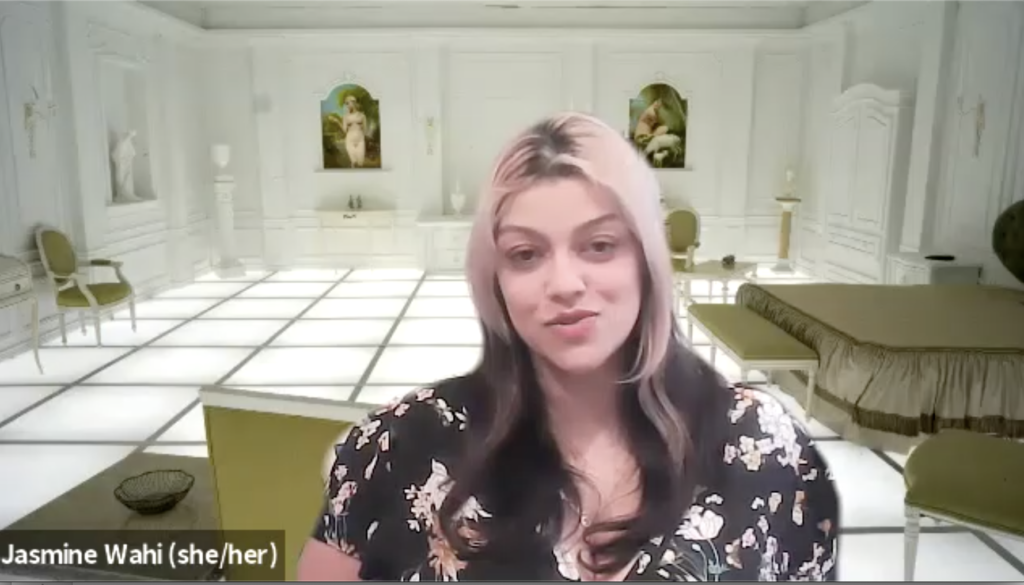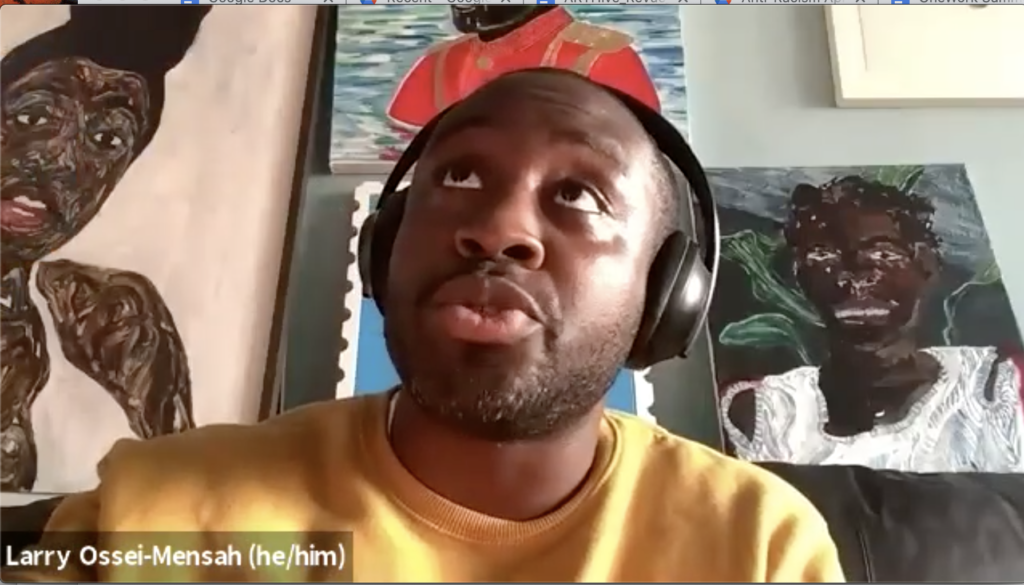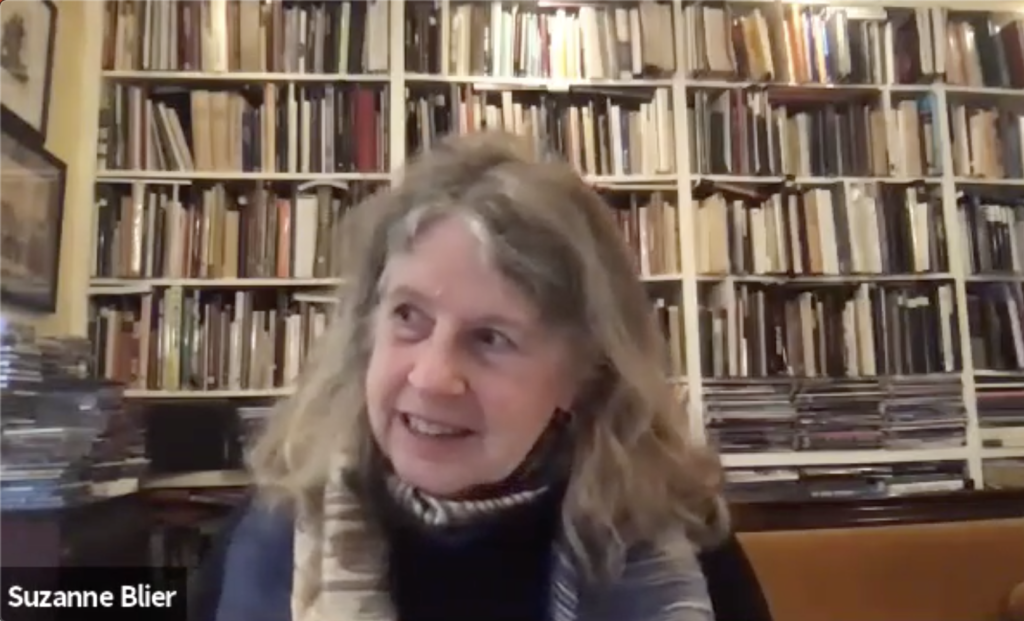How do we create more just and equitable arts organizations? How can we use the past to build a new architecture of ideas? On April 6, ARTHive helped sponsor an online conversation about these questions and more.
Our four guests were independent curator and art facilitator, Anita N. Bateman, Ph.D; critic & activist Jasmine Wahi, critic/curator Larry Ossei-Mensah, and the art historian Suzanne Blier. Brick by Brick was sponsored by Wheaton History of Art/ARTHive, DEAL, and The Marshall Center for Intercultural Learning. Department chair Ellen McBreen and Emily Gray ’22 moderated.
We were pleased with the turnout. Over 360 people signed up, which tells us how interested people are in discussing what roles the arts play in anti-racism work. The Zoom platform allowed us to reach people beyond Wheaton’s campus. Now, in the days after the event, many of us are still sitting with our guests’ ideas, and talking about them in our History of Art classrooms.
The event was the first in a series that ARTHive and History of Art faculty will plan together, on the theme of Representational Justice. Many of us have studied the power of images to create ideas about race in class, and we’ve focused on art and social activism in some of the history of art writing we’ve published here at the ARTHive Revue. April 6 was another brick laid in that work, in other words.
Watch a recording here.
Check out the Brick by Brick Anti-Racism educational resources here.
What did we take away from this conversation?
Read on to get a sense of the reactions from some of the Wheaton students who attended. One question for all of us now is how we’ll act on these complex and critical interventions.
Brick by Brick: Building Anti-Racist Arts Organizations provided a platform for students, curators, professors and activists to come together to shine much needed light on racism in America, white supremacy, and the impact it has on the arts. Larry Ossei-Mensah, Anita Bateman, Jasmine Wahi, and Suzanne Blier shared their individual experiences, philosophies and the specific challenges they’ve faced in today’s world, mid-pandemic. Ossei-Mensah stressed how important it is to continue supporting the BIPOC community: “The window of opportunity is closing. Whether it’s BLM or trauma and experiences it’s about showing the spectrum. BLM has caused this reckoning.” And Wahi reminded us: “These ideas that are flooding digital space need to maintain a level of extension so that they don’t become a trend.” Because our attention spans have been compromised in this age of technology, it is more important than ever to make the conscious effort to continue to support the BIPOC community now and throughout our lifetimes.
Julia Farinacci (2023)
The response Jasmine Wahi gave to the question about censorship spoke to me. I have never been able to wrap my mind around that problem. I feel like society is constantly walking this freakish line between controversy and silencing important voices that are telling the truth. It made me think of the idea of bringing people into the conversation rather than cancelling them and shutting them out because a subject is sensitive. As Wahi said: “We have to be able to take the critique: good, bad, and ugly…[Censoring art].. assumes people are not smart enough to know what they are getting into.”
Anne Grabowski (2021)
The speakers dissected “uncomfortable art” focusing on Shaun Leonardo’s exhibition about police brutality. They were direct about the importance of not being shy as artists, even if work can be triggering to a community…
Genesis Lantigua-Diaz (2023)
Bricks are both agents of anger and building blocks of armistice. This event provided the space for movers and shakers to talk about the bricks of their practice: how they actively deconstruct, redefine, and reconstruct arts organizations to create a more just world. There were a couple of moments that resonated for me. When asked a question about learning and rebuilding, Anita Bateman and Larry Ossei-Mensah unpacked the concept of “empathy.” This word has been used in conjunction with white savior rhetoric, and the ideal of compassionate sentiment that can lack actual action or productive discourse. Empathy can feel like a passive, or even condescending, response, while building an anti-racist world is active work. This reminded me to think critically about some of the words used, and what their implications are to others. Another moment was when Bateman pushed back on an idea suggested by Blier, that the impact of an art exhibition rests in its critical reception and framing and not in the artwork itself. Bateman reminded us that objects are not “indifferent” and so should not be absolved of their impact just because they do not breathe. Trauma can be woven into museum spaces. This conversation, overall, reminded me to avoid patterns of comfortability and to constantly question proposed paradigms.
Emily Gray (2022)
As someone who wants to be a museum curator and possibly a museum director, I found this conversation extremely useful. How art is displayed is something I’ve thought deeply about. I feel the biggest issue is a lack of context and the generalization of regionalized collections that can make them feel segregated. Most museums as a whole sometimes feel like giant memorials to colonialism, but that’s mainly because there’s not a lot of specific explanations of where objects came from, how African, Asian, and Oceanic objects entered the museum, and what someone is even looking at in relation to art made or acquired because of colonialism. That’s critical information for museum visitors to have.
Alizabeth Jewell (2023)
Larry Ossei-Mensah said that showing the spectrum is important. How do we start making real change for all races and for all types of people? More of these conversations need to be happening. Oppression and the justice solutions happen on a multitude of levels. Hold these organizations accountable! This is not work that will stop tomorrow; we need to keep working. As Jasmine Wahi reminded us, there is no end date to this work: [It’s] “an evolution rather than a terminal journey.”
Erika Mathieson (2024)
Larry Ossei-Mensah voiced a desire to “hold institutions accountable” by asking them to acknowledge their past and commit to making long-term change. Although the speakers also were unable to provide a definitive answer to many of these questions, they offered several solutions to work towards systemic change. For example, institutions should recruit and amplify BIPOC leaders, commit to anti-racist programming beyond the scope of the BLM movement, and connect and create accessibility within the local community.
Eliza Browning (2022)

